How Much Is a Yard of Mulch Cost?
- January 11, 2024
- 0 comment
Are you contemplating the revitalization of your flowerbeds by applying a fresh layer of mulch, or have you recently established a new raised bed filled with vegetables that requires enhanced moisture retention? Continue reading for a comprehensive exploration, covering aspects such as determining the volume required, estimating costs, and calculating the precise quantity of mulch necessary for your landscaping endeavors.
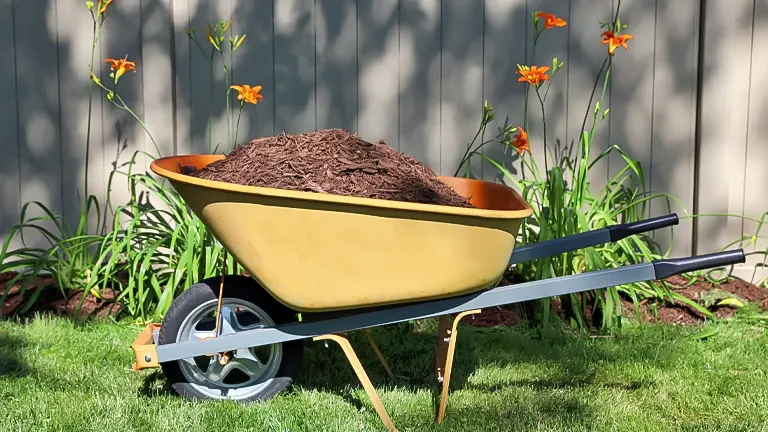
Mulch serves as an excellent landscaping material, contributing both color and texture while offering practical benefits such as weed reduction and improved moisture retention for plants, especially during the sweltering days of summer. It comes in various materials, including pine, cedar, cypress, oak rubber, and others.
Instead of opting for individual bags, consumers have the option to procure mulch in bulk units referred to as yards. But what precisely constitutes a yard of mulch? This guide is designed to address that inquiry in detail, shedding light on the nature of this versatile landscaping product and providing valuable insights into its utilization.
List of How Much Is a Yard of Mulch Cost:
- How to Calculate Mulch Quantity
- What is the Cost of One Yard of Mulch
- Wood Types
- Rubber Mulch
- Proper Safety To Use A Mulch In A Yard
- Bags or Bulk?
- Choosing Between DIY and Professional Installation for Mulching
- Closing Remarks
How Mulch Volume is Quantified
Mulch is commonly offered for purchase through retailers and suppliers in two primary forms: either by individual bags or in bulk units, the latter being akin to loose mulch deposited directly into the bed of a truck. Both of these options are quantified in “yards,” serving as the standard unit to express the volume of mulch.
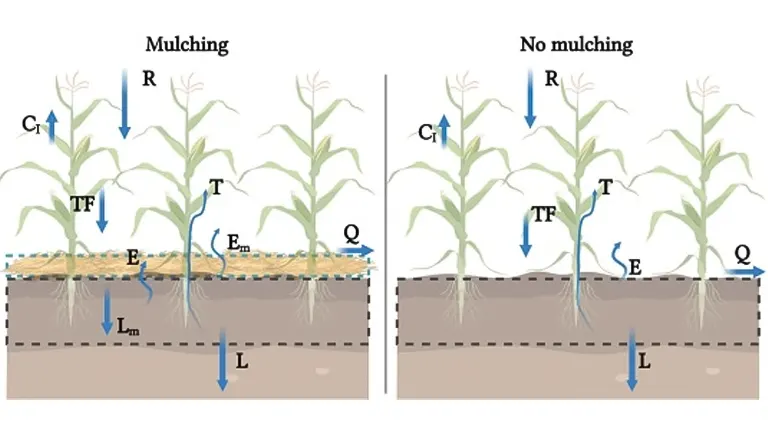
In this context, a yard is defined as measuring 3 feet in length, 3 feet in width, and 3 feet in depth, resulting in a total of 27 cubic feet. This standard measurement is frequently employed when dealing with bulk mulch. For instance, if a customer approaches a mulch supplier and requests a yard of mulch, the supplier will load the customer’s truck with 27 cubic feet of the selected mulch.
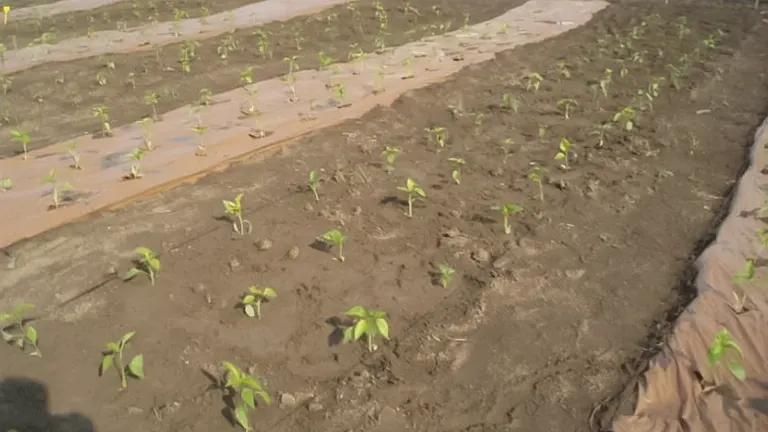
Alternatively, mulch is also packaged in individual bags, commonly found in big-box retailers and home centers. These bags typically contain 2 cubic feet of mulch, although smaller sizes are available. To accumulate a complete yard of mulch using this method, one would need to purchase at least 27.5 bags of mulch. While this approach is often considered less cost-effective, it remains a practical choice for individuals transporting mulch in smaller vehicles such as cars or SUVs.
1. How to Calculate Mulch Quantity
Determining the appropriate amount of mulch, whether purchased in bulk or by the bag, is a crucial consideration for homeowners. The following formula offers guidance in estimating the required mulch quantity for a given space:

- Measure the length of the garden or flower bed in feet (round up to the nearest foot).
- Measure the width of the garden or flower bed in feet (round up to the nearest foot).
- Specify the desired mulch depth in inches (typically between two to four inches).
- Multiply the length by the width to calculate the area.
- Multiply the area by the desired depth (commonly 2, 3, or 4 inches) to determine the volume.
- Divide the volume by 324 to ascertain the number of cubic yards needed.
For example, consider a standard raised bed measuring 4 feet in width and 8 feet in length. To inhibit weed growth while ensuring sufficient water reaches the plant roots, a 3-inch layer of mulch is desired. Applying the formula:
- 4 x 8 = 32 (area)
- 32 x 3 = 96 (volume)
- 96 / 324 = 0.30 (rounded up from 0.296)
In this case, approximately 1/3 yard of mulch is needed. Since suppliers may not typically sell fractions of a yard, purchasing mulch by the bag might be more practical. Given that 1/3 of a yard is equivalent to 9 cubic feet, the homeowner would require approximately 4.5 bags of mulch.
2. What is the Cost of One Yard of Mulch
Typically, the cost of a yard of mulch falls within the range of $30 to $150, with the more popular varieties, such as dyed red or black mulch, averaging around $40. However, various factors come into play when determining the final cost, and some considerations can elevate the price to exceed $200 per yard.
3. Wood Types
The primary determinant of mulch cost is the type of wood from which it is derived. Different wood species possess varying degrees of resistance to rot and insects, as well as differences in availability, influencing their respective prices.

- Undyed pine mulch stands as the most budget-friendly option, typically priced at approximately $30 per yard when purchased in bulk.
- Dyed mulch, subjected to a dyeing process, often incurs an additional cost of $5 to $10 per cubic yard, bringing the total to around $40.
- Playground mulch, specially ground at sawmills to ensure a smoother texture and reduce the risk of splinters or injuries, may range between $50 and $60 per yard, even in its undyed form.
- Cedar mulch, less readily available than pine mulch and offering heightened resistance to bugs, can command a higher price, reaching up to $100 per yard.
4. Rubber Mulch
Mulch crafted from recycled materials like tires, known as rubber mulch, presents a pricier alternative compared to wood mulch. Despite its higher cost, rubber mulch boasts a soft texture and exceptional durability, maintaining its color without fading over an extended period.
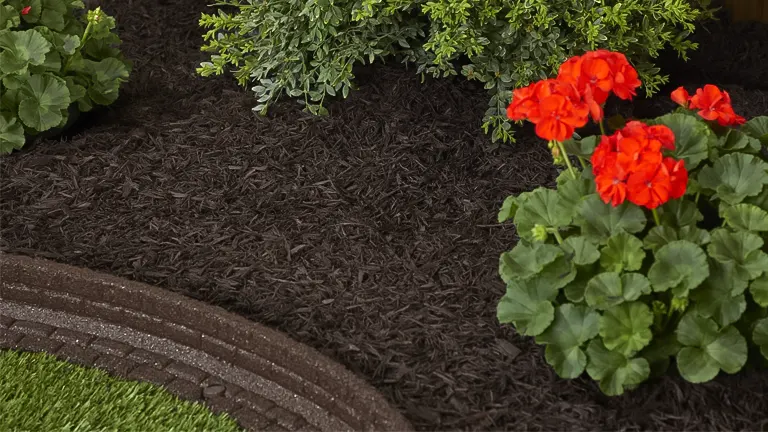
Acquiring rubber mulch in bulk is less common, making bags the predominant method of purchase. However, bags of rubber mulch are more expensive than their wood counterparts and typically offer a smaller volume. A standard bag of rubber mulch is typically .8 cubic feet, necessitating the purchase of approximately 33.75 bags to reach a full yard.
5. Proper Safety To Use A Mulch In A Yard
- Protective Gear: Wear appropriate protective gear, including gloves and safety glasses, when handling mulch to prevent skin irritation and eye injuries.
- Allergies Awareness: Be aware of any potential allergies to certain types of mulch materials, and choose alternatives if necessary to avoid allergic reactions.
- Proper Lifting Techniques: When moving bags or bulk quantities of mulch, use proper lifting techniques to avoid back strain or injuries. Lift with your legs and not your back.
- Avoiding Overhead Power Lines: Be cautious about the placement of mulch around trees, especially near overhead power lines. Avoid piling mulch too high to prevent fire hazards and interference with utility lines.
- Children and Pets Safety: Keep children and pets away from freshly mulched areas until the mulch has settled, and educate them about not playing in or consuming mulch.
- Preventing Slips and Trips: Spread mulch evenly to prevent uneven surfaces that could lead to slips or trips. Avoid creating mounds or hills that may pose a tripping hazard.
- Avoiding Over-Mulching: Over-mulching can create an environment conducive to pests and fungal growth. Follow recommended mulch depth guidelines to maintain a healthy landscape.
- Fire Safety: Be cautious when smoking or using open flames near mulch, as some materials are flammable. Avoid placing mulch close to heat sources or ash disposal areas.
- Checking for Hazards in Mulch: Inspect mulch for potential hazards such as sharp objects, glass, or foreign materials that could cause injuries during application or gardening activities.
- Proper Storage: Store mulch in a dry, well-ventilated area to prevent mold growth. Keep bags properly sealed to maintain the quality of the mulch and reduce the risk of contamination.
6. Bags or Bulk?
Opting to buy mulch by the bag is generally deemed less cost-effective, regardless of the material selected. For instance, a 2-cubic foot bag of dyed wood mulch typically costs between $4 and $6 per bag. Considering that 14.5 bags are needed to make a yard, the overall cost ranges from $58 to $87 per yard. In contrast, rubber mulch, starting at around $6 per .8 cubic feet bag, results in a yard costing $202.50.
On the other hand, the most economical approach for mulch procurement is in larger quantities. Suppliers often provide discounts to customers buying 20 yards or more, with variations in discounts among different companies. Additionally, discounts on delivery fees may be offered for full dump truck loads.
7. Choosing Between DIY and Professional Installation for Mulching
Mulching is a task well-suited for do-it-yourself enthusiasts. However, individuals dealing with physical limitations, hectic schedules, or expansive gardens may opt to enlist the services of a professional contractor. For a fee, these contractors take on the responsibility of loading the mulch, transporting it to the property, and efficiently applying it to the designated beds.
The average cost associated with professional mulch installation is around $0.20 per square foot of the garden bed. It’s important to note that the desired depth of the mulch also influences the overall cost, with thicker layers incurring slightly higher costs per square foot.
Now, considering a 32-square foot garden bed, one might think the installation cost would be approximately $6.40. However, there is typically a minimum requirement for mulch installation, often exceeding $50. Consequently, for smaller jobs, it may be more cost-effective to handle the installation independently. On the other hand, for larger projects involving several yards of mulch, investing in professional installation might prove to be a worthwhile consideration.
Closing Remarks
Concluding our comprehensive exploration, we’ve covered essential insights into mulch, delving into aspects such as volume considerations, various types available, and the corresponding costs. As you embark on your mulching journey, consider reaching out to local suppliers to conduct a thorough price comparison.
Additionally, inquire about potential discounts for substantial orders, especially if your project involves a significant quantity of mulch. Armed with this knowledge, the next time someone inquires about the cost of a yard of mulch, you’ll be well-equipped to provide them with an informed and detailed response.
Frequently Asked Questions
- What factors influence the cost of a yard of mulch?
The type of mulch, its source material, and any additional features such as color or treatment can impact the overall cost. - How is the volume of mulch measured in a yard?
A yard of mulch is typically measured in cubic feet, with standard dimensions of 3 feet long by 3 feet wide by 3 feet deep. - Is it more cost-effective to buy mulch in bulk or by the bag?
Generally, purchasing mulch in bulk is more economical, as buying by the bag often incurs higher costs per cubic yard. - What is the average cost range for a yard of mulch?
The cost can vary widely, but on average, it falls between $30 and $150, depending on factors like the type of mulch and its source material. - How does the type of wood affect the cost of mulch?
Mulch made from different wood species may vary in cost, with factors such as rot resistance and availability influencing the price. - What is the cost difference between dyed and undyed mulch?
Dyed mulch, which undergoes a coloring process, generally costs $5 to $10 more per cubic yard compared to undyed mulch. - Why is rubber mulch more expensive than wood mulch?
Rubber mulch, made from recycled tires, tends to be more expensive due to its unique properties, such as softness and prolonged color retention. - Are there discounts available for purchasing mulch in large quantities?
Yes, many suppliers offer discounts for customers buying 20 yards or more of mulch, providing a cost-saving incentive for larger projects. - What is the cost difference between professional mulch installation and DIY?
Professional mulch installation averages around $0.20 per square foot, whereas DIY may be more cost-effective for smaller projects but might involve a minimum charge. - How can I calculate the amount of mulch needed for my garden or flower bed?
Measure the length and width of the area, specify the desired mulch depth, and use a formula to determine the volume required. Divide this volume by 324 to find the number of cubic yards needed.
Your feedback matters! Feel free to share your experiences and thoughts on the cost of a yard of mulch in the comments section below. Your insights could be invaluable for others navigating the world of mulch procurement, aiding them in making well-informed decisions for their landscaping projects!

Edward Smith
Forestry AuthorWoodworking is about more than crafting; it's a harmonious connection with nature, mastering tools, and preserving our environment. I'm here to share my knowledge and experiences with you, forging a future where we can embrace wood's beauty and utility while safeguarding our forests' health and diversity.


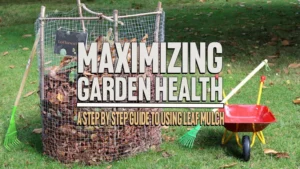



Leave your comment